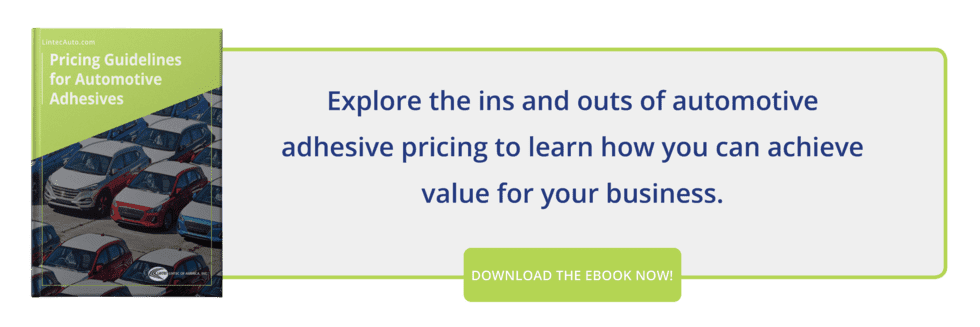Cost vs. Value: When Is the Price Just Right For Automotive Tapes?

Purchasing decisions in the automotive supply chain are often predicated on one suppliers price compared to another. While a competitive price for automotive tapes is always welcome, it doesnt guarantee that youre making the right purchasing decision.
Whats most important? Total value.
For example, a particular automotive tape could be the cheapest option on the marketlets say a standard double-sided adhesive tape for cars, like an acrylic film for mounting plastic trim or a rubber weatherstrip. Such a purchase could save on upfront costs compared to an equal-volume order of high-grade, polyethylene foam anti-vibration tape (also used in mounting applications).
However, if the benefits of the costlier purchase result in significantly higher component quality, attractive value-added features, and better sales, the end result could prove more profitable. The foam option might do a better job of:
- Accommodating the differing thermal expansion properties between the substrates
- Surviving (and cushioning against) the regular shocks experienced by vehicle doors
- Isolating the affixed element from vibrations
Do these advantages make the end product more saleable, or give it greater longevity? Value has more to do with the total impact of your investment than the initial priceeven if its the market rate.
How Can You Benefit From Your Investment?
To find a price thats just right, youve got to balance the profits you stand to gain against the increased costs of a superior product. There are many sensible reasons to seek value-added automotive tapes, such as:
- Temperature Resistance: Tapes for use in the engine compartment and on the dashboard have vastly different needs, but at least one in common: theyll get hot. The engine can often operate at boiling temperatures, and dashboards can easily top 157°F while the vehicle is parked outside on a summer day. High-grade acrylic adhesives and cores made with heat-stabilized PVC, polyester, or vinyl offer superior stability in extreme heat.
- Tolerance to Chemical Exposure: Automotive tape often needs to survive contact with harmful substances. Consider battery and gas cap labels, wire harness tape, and exterior mounting tapes near the road (where theyll be exposed to salt, dirt, oil-slicked water, and more). Here, its worth investing in highly chemical resistant materials like PET, PVC, PTFE, and acrylic.
- Flexibility For Unlike Substrates: Bonding substrates with vastly different linear temperature expansion coefficients, like aluminum (21-24 ) and PVC (54-110)? Youll benefit from an upgrade to automotive tapes with viscoelastic properties that flex to remain adhered as the substrates fluctuate.
These are just a few of the features you can invest in with higher-end automotive tapes. In general, a higher upfront cost can yield stronger bonds, more versatility, thicker gauges, and longer service life.
If You Cant Use a Feature, Its Not a Value-Add
Other scenarios for automotive tapes could incentivize a more economical solution at a lower price point. Theres no use investing in a structural-bonding-strength adhesive for an emblem that will be mounted in a low-contact area of the interior cabin, for example. Select a simpler emblem adhesive.
In cases where the substrates are smooth and flat, have high surface-energy, are made from the same material, and will be exposed to minimal stresses, a simple solution is both more cost-effective and more valuable in the long run.
To sum up, the price is just right when you strike the perfect balance between two things:
- All of the high-performance features that will differentiate your product in quality.
- Streamlined costs, earned by excluding any value-adds that will rarely come into play.

